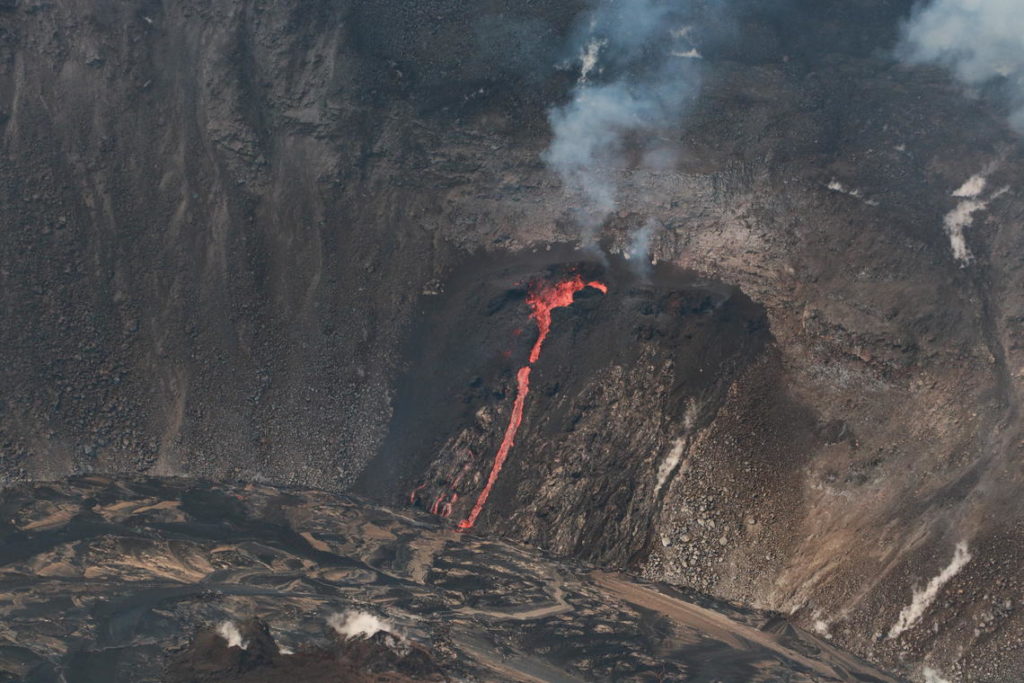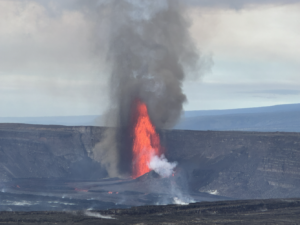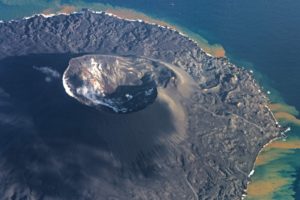December 23 2020.
Italy / Sicily , Etna :
ETNA PRESS RELEASE [UPDATE n. 108]
The National Institute of Geophysics and Volcanology, Osservatorio Etneo, announces that on the basis of the observations made through an inspection carried out by the staff of the INGV and through the analysis of images from the network of surveillance cameras, it has been possible to verify that the lava flows described in the previous press releases are no longer fed and are cooling.
During the inspection, samples of the products of explosive activity were taken.
From the seismic point of view, the volcanic tremor, in the last hours, showed modest oscillations in its amplitude, currently remaining on an average value. The position of the centroid of its sources is still located in the area of the Southeast crater. Regarding infrasonic activity, there was a slight decrease in the number of infrasonic events; the sources are mainly located in the area of the Northeast crater and, to a lesser extent, in the area of the Southeast crater.
The soil deformation monitoring networks no longer show significant deformations on the signals from high and medium altitude stations compared to press release no.107.
Further updates will be communicated shortly.
Source : INGV.
Hawaii , Kilauea :
19°25’16 » N 155°17’13 » W,
Summit Elevation ; 4091 ft (1247 m)
Current Volcano Alert Level: ATTENTION
Current Aviation Color Code: ORANGE.
The eruption at Kīlauea Volcano’s summit continues within Halema‘uma‘u crater. This photo, taken at approximately 2:43 p.m. HST on December 22, shows the two fissures active on the crater wall that continue to feed a growing lava lake. USGS photo by L. DeSmither.
Activity Summary:
No significant change. Kīlauea continues to erupt at its summit from at least two vents on the north and west sides of Halemaʻumaʻu. As of this morning, the growing crater lake was 487 m (1,598 ft) below the crater rim, indicating that the lake has filled 134 m (440 ft) of the bottom of the Halemaʻumaʻu crater
Summit Observations:
Summit tiltmeters continued to record slowing deflationary tilt through this morning. Sulfur dioxide emission rates remain high estimated at around 30,000 tonnes/day. Seismicity is elevated but stable the last day, with few earthquakes and tremor fluctuations related to the vigor of fissure fountaining.
Aerial imagery collected during a USGS Hawaiian Volcano Observatory overflight at approximately 11:35 a.m. HST. This photo shows the western, weaker of the two active fissures in Kīlauea Volcano’s ongoing summit eruption in Halema‘uma‘u crater. USGS photo.
Halemaʻumaʻu lava lake observations:
When measured last night, the Halemaʻumaʻu lava lake was 487 m (1,598 ft) below the crater rim and rising at more than 1 m/hr (3 ft/hr). Of the three vents that initially erupted from the north and northeast walls of Halemaʻumaʻu, only two remain active, with the middle vent pausing eruptive activity between approximately 7:30 and 8:00 a.m. HST. The middle and west vents, which are located on the lowest down-dropped block within Halemaʻumaʻu crater, have since been inundated by the growing lava lake. The farthest east vent remains the most vigorous.
As of early this morning, a preliminary calculation of volume suggests that, since the start of the eruption, approximately 10 million cubic meters of lava have been erupted (equivalent to over 2 billion gallons). This is a surface area of about 33 acres.
This comparison shows thermal images taken yesterday and today during USGS Hawaiian Volcano Observatory helicopter overflights. The main difference in this 24 hour period is the significant rise and infilling of the lava lake within Halema‘uma‘u crater at Kīlauea summit. This morning, the lake depth was measured at approximately 130 yards. USGS images by M. Patrick. (Public domain.)
Hazard Analysis:
High levels of volcanic gas, rockfalls, explosions, and volcanic glass particles are the primary hazards of concern regarding this new activity at Kīlauea’s summit. Large amounts of volcanic gas—primarily water vapor (H2O), carbon dioxide (CO2), and sulfur dioxide (SO2)—are continuously released during eruptions of Kīlauea Volcano. As SO2 is released from the summit during this new eruption, it will react in the atmosphere with oxygen, sunlight, moisture, and other gases and particles, and within hours to days, convert to fine particles. The particles scatter sunlight and cause the visible haze that has been observed downwind of Kīlauea, known as vog (volcanic smog), during previous summit eruptions. Vog creates the potential for airborne health hazards to residents and visitors, damages agricultural crops and other plants, and affects livestock operations. Rockfalls and minor explosions, such as the ones that occurred during the 2008–2018 lava lake eruption at Kīlauea summit, may occur suddenly and without warning. This underscores the extremely hazardous nature of Kīlauea caldera rim surrounding Halemaʻumaʻu crater, an area that has been closed to the public since late 2007. Pele’s hair and other lightweight volcanic glass fragments from the lava fountains within Halemaʻumaʻu will fall downwind of the fissure vents and lava lake, dusting the ground within a few hundred meters (yards) of the vent. High winds may waft lighter particles to greater distances. Residents are urged to minimize exposure to these volcanic particles, which can cause skin and eye irritation similar to volcanic ash.
Source : HVO.
Merry Christmas everyone.
Take care of yourself.
Back to business on 12/27.







